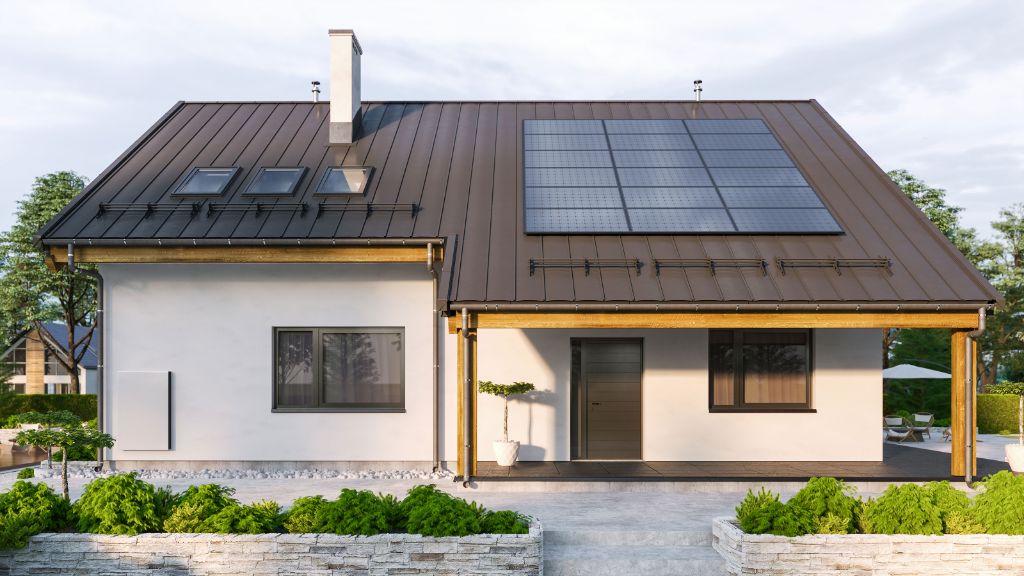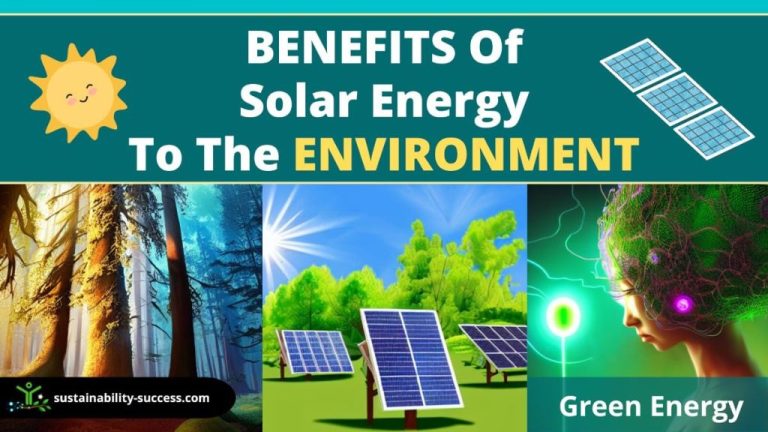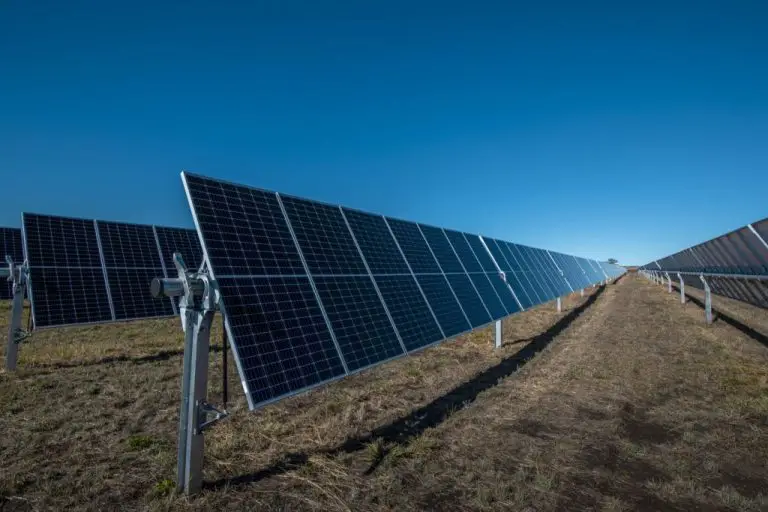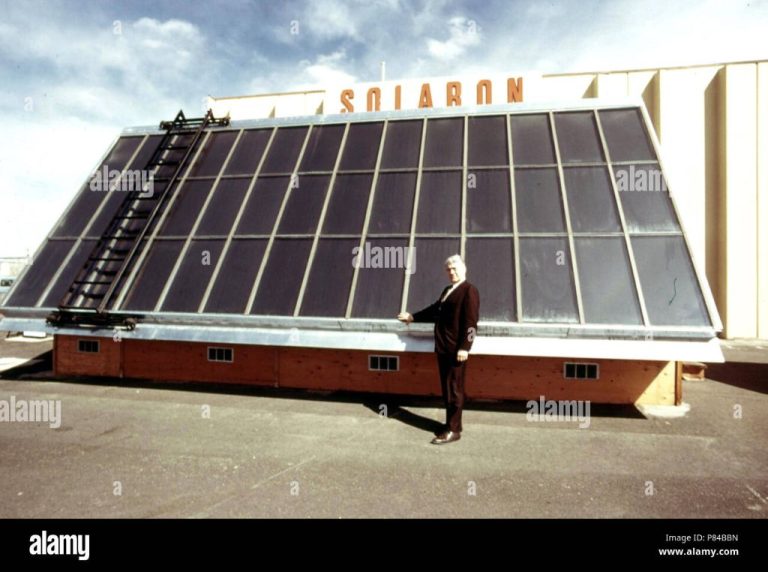What Two Useful Forms Of Energy Come From The Sun?
The Sun provides a vast and renewable source of energy that can be harnessed in many ways. This article will focus on two of the most common and useful forms of solar energy used today: solar thermal energy and solar photovoltaics.
Solar thermal energy involves capturing the heat from sunlight to provide thermal energy for heating or electricity generation. Solar photovoltaics (PV) convert sunlight directly into electricity through the use of solar panels.
Both solar thermal and PV technologies offer clean, renewable alternatives to fossil fuels that can help reduce greenhouse gas emissions and reliance on non-renewable energy sources. When effectively implemented, solar energy can provide substantial environmental and economic benefits.
Solar Thermal Energy
Solar thermal energy harnesses the heat from the sun’s rays to provide renewable energy for heating and electricity generation. Also known as solar heat technologies, solar thermal systems collect solar radiation and convert it into useful forms of energy. There are two main ways solar thermal captures heat from the sun:
Passive Solar Heating: This direct method utilizes building designs that maximize heat gain in the winter and minimize it in the summer. Strategies include orienting windows and roofs to the south, utilizing thermal mass to store heat, and integrating overhangs or shading to reduce summer solar gain. The captured solar energy directly offsets building heating needs.
Solar Collectors: Active solar heating systems use solar collectors installed on roofs or walls to absorb sunlight. Fluid filled pipes behind the collectors transfer the heat to a storage tank for domestic hot water, space heating, or to drive a turbine for electricity generation in concentrated solar power plants. Solar collector fields allow for much greater heat capture than passive techniques.
In summary, solar thermal design fundamentally revolves around collecting and retaining heat from sunlight. The technologies allow solar radiation to be effectively harnessed as a substitute for fossil fuel use in heating and electrical generation applications.
Passive Solar Heating
Passive solar heating utilizes building design features to capture heat from the sun. This allows solar energy to passively heat spaces without the use of any mechanical equipment. Passive solar design takes advantage of the sun’s position in relation to a building’s windows, walls, and floors to maximize solar heat gain in winter and minimize it in summer.
Some key passive solar heating techniques include:
- Window orientation – Placing larger windows on south-facing walls allows more sunlight to enter the building during winter.
- Thermal mass – Materials like concrete, stone, and tile absorb and slowly release heat from the sun. Locating thermal mass on the south side of the building helps regulate interior temperatures.
- Overhangs – Properly sized eaves or overhangs block high summer sun from hitting south-facing windows but allow lower winter sun to enter.
- Insulation – Adding extra insulation to walls, ceilings, and floors reduces heat loss in winter and keeps summer heat out.
- Radiant barriers – Reflective surfaces in attics reduce heat transfer into living spaces.
When designed properly, passive solar heating can meet 30-60% of a building’s heating needs in winter. It’s a cost-effective way to utilize solar energy for space heating without any moving parts or solar collectors.
Solar Water Heating
Solar water heating systems use solar energy to pre-heat water for domestic or commercial use. They work by circulating water or a heat transfer fluid through panels called solar collectors. These collectors absorb heat from the sun which is transferred to the water, thereby reducing the amount of conventional energy needed to heat the water to the desired temperature.
There are two main types of solar water heating systems:
Active Systems: These use pumps to circulate water or heat transfer fluid through the collectors. These are more efficient but also more expensive than passive systems.
Passive Systems: Rely on gravity and the tendency for water to naturally circulate as it is heated. These are lower cost but can be less efficient.
The key components of an active solar water heating system are:
- Solar thermal collectors mounted on the roof
- A storage tank for the heated water
- A pump to circulate the fluid through the collectors
- Pipes to connect the system components
- Sensors and controls

The benefits of solar water heating include reducing water heating bills by 50-80% and decreasing your home’s carbon footprint. With the right climate conditions and incentives, the systems can pay for themselves in just a few years through energy savings. Overall, solar water heating provides an eco-friendly way to harness the sun’s abundant energy for an essential daily need.
## Concentrated Solar Power ##
Concentrated solar power (CSP) plants use mirrors to concentrate sunlight and heat a receiver containing a heat transfer fluid. The thermal energy collected is then used to drive a traditional steam turbine to generate electricity. There are four main types of concentrating solar thermal technologies:
- Parabolic trough systems use curved, mirrored troughs that focus sunlight on a pipe containing oil or other fluid. The fluid is heated to approximately 400°C and used to generate steam for a turbine.
- Power tower systems use a field of flat, movable mirrors (called heliostats) to focus and concentrate sunlight onto a central receiver on top of a tower. Fluids in the receiver are heated to over 1000°C.
- Parabolic dish systems use dish-shaped mirrors to focus sunlight onto a receiver at the focal point of the dish. The receiver reaches up to 750°C.
- Linear Fresnel reflector systems use long, thin segments of flat or slightly curved mirrors placed at different angles to concentrate sunlight onto elevated receivers.
The beauty of CSP plants is their built-in thermal energy storage capability, allowing electricity generation even when the sun isn’t shining. Excess heat produced during periods of high solar radiation can be stored in large tanks of molten salt, oils, or other fluids for later use. This gives CSP an advantage over intermittent solar technologies like photovoltaics.
Photovoltaics
Photovoltaic cells, also known as solar cells, are semiconductor devices that convert sunlight directly into electricity. When sunlight hits the cell, photons are absorbed in the semiconductor material, causing electrons to become liberated and flow in the form of direct current electricity. The process requires no moving parts and generates no pollution.
PV cells are typically made from silicon, the most common semiconductor material. Silicon atoms are covalently bonded together to form a crystal lattice. When a photon hits the cell, its energy frees an electron from its bound state, allowing it to flow freely. The photon’s energy must be greater than the band gap energy in order to free an electron. This causes electrons to flow from the p-type side to the n-type side, generating an electric current. Metal contacts direct this current flow to external wires as usable electricity.
PV cells can be joined together to form modules and panels. They can be integrated into building materials or mounted on rooftops and the ground in the form of solar arrays. These systems can be grid-connected or off-grid, providing clean renewable electricity from the power of sunlight.
Grid-Connected Systems
The most common type of photovoltaic (PV) systems are grid-connected systems, which are connected to the utility grid. These systems allow homeowners or businesses to generate their own electricity from solar panels during the day to offset their electricity purchases from the utility. Any excess electricity produced is fed back into the grid, spinning the home’s or business’s electricity meter backwards. This is called net metering.
Grid-connected PV systems consist of solar panels, one or more inverters, and a connection to the utility grid. The inverter converts the DC power from the solar panels into AC power that is compatible with the grid. These systems use net metering, which allows excess power to be sent to the grid when solar production exceeds a building’s demand. The building then draws power back from the grid when needed, receiving credit for excess power exported earlier.
Grid-connected systems provide a seamless transition between solar power and utility power. Homeowners and businesses with these systems can reduce their utility bills without needing battery storage. However, grid-connected PV does require an interconnection agreement with the local utility. Overall, these systems provide clean solar power with minimal lifestyle disruption for the owner.
Off-Grid Systems
Off-grid photovoltaic systems are not connected to an electricity distribution grid and are used in remote areas without grid access. They operate independently and consist of solar panels, batteries, a charge controller, and an inverter. The solar panels charge the batteries during the day, and the stored energy is used to power electrical loads at night or on cloudy days.
Off-grid systems are popular for powering homes, businesses, telecommunications, water pumping, and other applications in rural areas without electricity infrastructure. They provide a cost-effective and sustainable electricity solution. Since they don’t rely on the grid, they can operate during outages and are extremely reliable.
The size of the off-grid system depends on the energy demand and solar resource. Enough solar panels and batteries are installed to meet the load requirements. Systems are designed based on the average energy usage per day. Larger battery banks provide more backup during extended bad weather.
Off-grid PV is an empowering technology, providing electricity access to remote communities to uplift lives. It enables modern amenities and services through lighting, refrigeration, healthcare, education and communication. Off-grid solar is expected to continue expanding globally and helping connect the 1.3 billion people who still lack electricity access.
Costs
The costs of solar energy systems have dropped dramatically in recent years, making solar power more affordable and accessible. Prices vary based on system size, location, available sunlight, and local rebates or incentives.
For residential solar PV systems, the average cost is around $2.80 per watt. So a typical 5kw system for a home would cost $14,000 before any tax credits or incentives. Commercial and utility-scale systems can be below $1 per watt.
The cost of solar thermal systems depends on the type. Active systems for water and space heating average $30,000 to $60,000 installed. Passive solar design costs very little but depends on construction or renovation costs. Overall, solar thermal systems can provide a 15-25% return on investment.
The main factors reducing solar costs are technological improvements, economies of scale in manufacturing, and expanded incentives. In the last 10 years, solar PV module costs have dropped 89% and solar thermal costs have dropped 70%. As adoption continues to increase, costs are projected to keep falling.
Compared to fossil fuels, solar energy has no fuel costs over its 25+ year lifespan. And it offers a hedge against future electricity price hikes. While solar has higher upfront costs, it pays back over time through electricity bill savings.
Conclusion
The two main useful forms of energy that come from the Sun are solar thermal energy and solar photovoltaic energy. Solar thermal energy harnesses the heat from the Sun to provide thermal energy for heating, while solar photovoltaics convert sunlight directly into electricity using solar panels.
Solar thermal energy has applications like passive solar heating for buildings, solar water heating systems, and concentrated solar power plants. Passive solar heating utilizes building design features to collect, store, and distribute solar heat passively. Solar water heating systems use solar thermal collectors to heat water for domestic or commercial use. Concentrated solar power plants use mirrors to concentrate sunlight to heat a fluid and drive a steam turbine.
Solar photovoltaics convert sunlight directly into electricity using the photovoltaic effect. Photovoltaic systems can be grid-connected to supply power to the utility grid, or they can be off-grid systems for remote power needs. Solar photovoltaics provide clean renewable electricity with minimal environmental impact. The costs of solar PV have declined dramatically in recent years making it an increasingly affordable renewable energy source.
In summary, solar thermal and solar PV technologies allow us to harness the Sun’s energy in useful forms for heating, electricity, and more. With their minimal environmental impact and rapidly declining costs, solar energy will continue growing as a vital energy source for our future.






